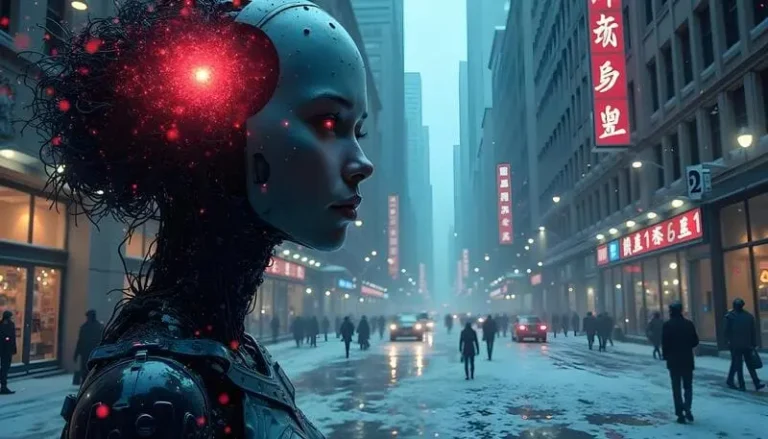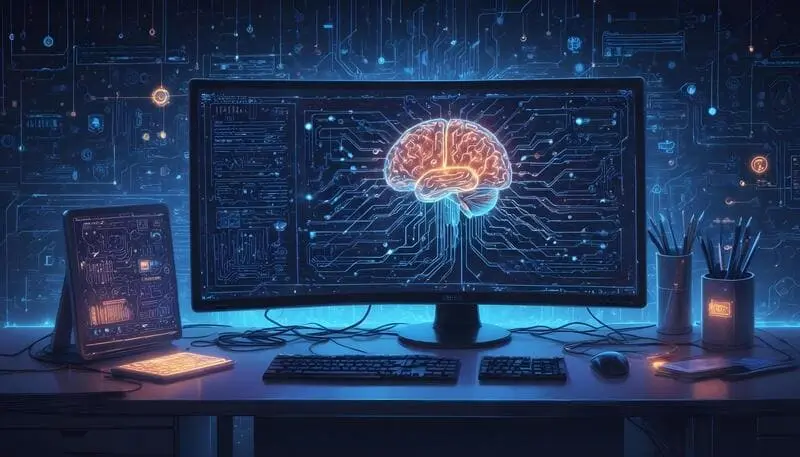Artificial Intelligence (AI) has quickly become a big part of our lives, showing up in everything from smartphones and smart homes to healthcare and business tools. While AI offers huge benefits, it also raises important questions. Can AI be dangerous? Are there risks we need to consider as this technology becomes more advanced?
The short answer is yes—AI can be dangerous if not handled responsibly. But it’s not about robots taking over the world as we see in the movies. Instead, the risks of AI come from issues like privacy concerns, job displacement, and unintended consequences. Let’s take a closer look at the potential dangers of AI and what we need to be aware of.
1. Job Loss and Economic Disruption
One of the most talked-about risks of AI is its impact on jobs. As AI becomes more capable, machines are able to automate tasks that were once done by people. This is especially true for jobs that involve repetitive tasks, such as manufacturing, customer service, or even some types of office work.
Why This Is a Concern:
- Automation: As companies adopt AI-driven automation, certain jobs may become obsolete. For example, self-checkout systems in stores and AI-powered customer service bots are already reducing the need for cashiers and customer service representatives.
- Economic inequality: While AI can boost productivity and create new jobs in tech and data analysis, the transition could be difficult for people in industries where AI is replacing traditional roles. This could increase inequality if workers aren’t provided with training for new types of jobs.
Is there a solution?
One way to minimize the risks of job loss is to invest in retraining programs that help workers develop new skills, allowing them to transition into emerging fields like AI development, data science, or roles that require human creativity and empathy—skills that AI lacks.
2. Privacy Concerns
AI systems rely heavily on data to function. They collect, process, and analyze massive amounts of information to make predictions, personalize experiences, and improve accuracy. While this sounds beneficial, it also raises serious privacy concerns.
Why This Is a Concern:
- Data misuse: AI systems can collect personal data without users even realizing it. For example, smart assistants like Alexa or Google Home can listen to conversations and learn from them. This creates a risk of data being misused or accessed by unauthorized parties.
- Surveillance: In some cases, AI is used for surveillance, raising concerns about how much privacy people are willing to sacrifice for convenience or security. AI can track your online behavior, location, and even facial recognition in public spaces, which can feel invasive.
What can be done?
To address privacy risks, we need stronger data protection laws and more transparency from companies about how they collect and use personal data. Consumers should also be empowered to control what data is collected and how it’s used.
3. Bias in AI Systems
AI is only as good as the data it’s trained on. If that data contains bias, the AI system will likely reproduce or even amplify those biases. This can lead to unfair outcomes in areas like hiring, lending, or law enforcement, where AI is increasingly being used to make decisions.
Why This Is a Concern:
- Discrimination: For example, if an AI hiring system is trained on biased data that reflects a history of gender or racial discrimination, it might favor certain groups over others, even unintentionally. In law enforcement, biased data can lead to unfair treatment of minority communities.
- Unfair decisions: AI algorithms might unknowingly make decisions that are biased or discriminatory, affecting people’s lives in significant ways—such as denying someone a loan, a job, or access to certain services.
How can this be addressed?
It’s crucial to make AI systems more transparent and ensure they’re audited regularly to identify and correct biases. Additionally, developers need to focus on creating more inclusive datasets that represent diverse groups of people to minimize the chances of biased outcomes.
4. Unintended Consequences and Errors
AI systems are powerful, but they’re not perfect. Because AI often works based on algorithms and data, it can sometimes make errors or take actions that have unintended consequences. This can be particularly dangerous in critical areas like healthcare or autonomous vehicles.
- Misdiagnoses in healthcare: AI is being used in healthcare to diagnose diseases, but mistakes can happen if the data is flawed or the algorithm is improperly trained. A misdiagnosis could lead to incorrect treatment, putting patients at risk.
- Accidents with AI-driven cars: Self-driving cars, which rely on AI to navigate roads, could misinterpret signals or fail to recognize obstacles, leading to accidents.
What’s the solution?
One way to prevent errors is to ensure human oversight of AI systems, especially in high-stakes areas like medicine, transportation, and finance. AI should complement human decision-making, not replace it entirely.
5. Weaponization of AI
One of the most frightening potential dangers of AI is its use in autonomous weapons or military applications. If AI is used to build weapons that can operate without human intervention, it could lead to dangerous situations where machines make life-or-death decisions.
Why This Is a Concern:
- Lack of control: Autonomous weapons could act unpredictably or be used in ways that violate international laws. Without proper regulations, AI could be weaponized in conflicts, leading to unintended escalations or harm to civilians.
- Ethical issues: There are serious ethical concerns about letting machines decide when and how to use force, especially if these decisions aren’t transparent or accountable.
How can this be prevented?
Global discussions are already underway about creating regulations for the use of AI in warfare. It’s critical that governments and organizations establish clear guidelines to ensure that AI is used ethically and responsibly in military contexts.
6. Dependence on AI
As AI becomes more integrated into our daily lives, there’s a risk that we’ll become too dependent on it. While AI can automate tasks and make life more convenient, over-reliance on AI could lead to a loss of critical skills and human judgment.
Why This Is a Concern:
- Loss of skills: If we rely too much on AI for tasks like decision-making, problem-solving, or even driving, we could lose our ability to do these things ourselves.
- Over-reliance in critical areas: In healthcare, finance, or national security, too much reliance on AI without proper human oversight could lead to disastrous outcomes if the AI system fails or makes a mistake.
What can be done?
The key is to ensure that AI is used as a tool to assist humans, not replace them entirely. By keeping a balance between automation and human involvement, we can prevent over-reliance and maintain critical skills.
Final Thoughts: Is AI Dangerous?
While AI has the potential to bring about significant benefits, it’s important to recognize that it also comes with risks. These dangers don’t mean we should avoid AI altogether, but rather that we should approach it responsibly, with a focus on ethical development, transparency, and human oversight.
AI is a tool, and like any tool, it’s how we use it that determines whether it’s helpful or harmful. By understanding the risks and working to minimize them, we can harness the power of AI while protecting ourselves from its potential dangers.
Want to learn more about the benefits and risks of AI? Reach out to us for a deeper discussion on how AI is shaping the future and how we can use it responsibly!





